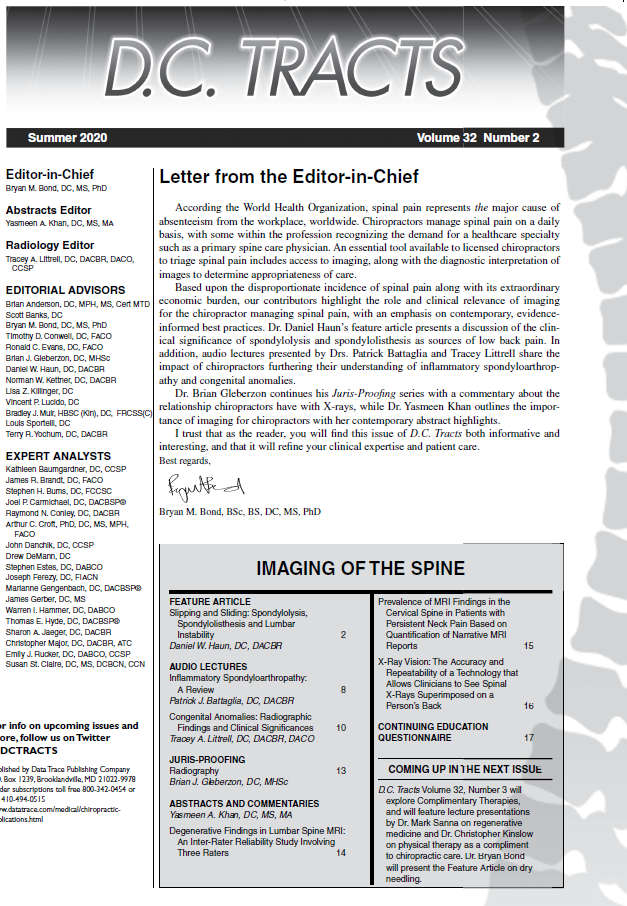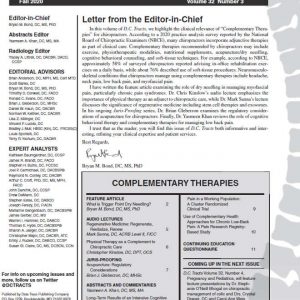32-2 Imaging of the Spine
$75.00
According the World Health Organization, spinal pain represents the major cause of absenteeism from the workplace, worldwide. Chiropractors manage spinal pain on a daily basis, with some within the profession recognizing the demand for a healthcare specialty such as a primary spine care physician. An essential tool available to licensed chiropractors to triage spinal pain includes access to imaging, along with the diagnostic interpretation of images to determine appropriateness of care.
Based upon the disproportionate incidence of spinal pain along with its extraordinary economic burden, our contributors highlight the role and clinical relevance of imaging for the chiropractor managing spinal pain, with an emphasis on contemporary, evidence-informed best practices.
Description
In This Issue:
- FEATURE ARTICLE: Slipping and Sliding: Spondylolysis, Spondylolisthesis and Lumbar Instability
Daniel W. Haun, DC, DACBR - AUDIO LECTURES:
- Inflammatory Spondyloarthropathy: A Review
Patrick J. Battaglia, DC, DACBR - Congenital Anomalies: Radiographic Findings and Clinical Significances
Tracey A. Littrell, DC, DACBR, DACO
- Inflammatory Spondyloarthropathy: A Review
- JURIS-PROOFING: Radiography
Brian J. Gleberzon, DC, MHSc - ABSTRACT AND COMMENTARIES:
Yasmeen A. Khan,DC, MS, MA- Degenerative Findings in Lumbar Spine MRI: An Inter-Rater Reliability Study Involving Three Raters
- Prevalence of MRI Findings in the Cervical Spine in Patients with Persistent Neck Pain Based on Quantification of Narrative MRI Reports
- X-Ray Vision: The Accuracy and Repeatability of a Technology that Allows Clinicians to See Spinal X-Rays Superimposed on a Person’s Back
- CONTINUING EDUCATION QUESTIONNAIRE






